Hello everybody. Today is a very special Fan Community Spotlight, and that would be because this installment is the 100th one on the website. On the day of August 26th 2019 was the day that I wrote the very first one on the Summoner Class made by Maxlot (or The Flawless Walrus). It's hard to believe that it's been nearly 3 whole years since then. The Out of Cards team is one that I've been blessed to work with ever since I was brought aboard to write content for the site and it's been a joy to work with them every day and they're all a great group of people.
What could be a way to celebrate this monumental occasion for the column? After giving it a lot of deliberation, my way of making a triumphant celebration is to show off a project that's very special to me. It's not a custom Hearthstone set, or even a Runeterra one. In fact, it's not a game that we cover on the website at all, but instead I'm going to show you a card game that I made by myself using MS Paint and Photopea. I never ended up finishing the first set of the game, although I did get incredibly close. This is a game that I showed my friends and they all loved it. I've made my own card games as small personal projects in the past before, but this game is definitely the most serious I ever got into making one.
The game didn't yet have a name, but it was a project that I got extremely invested into making. I started this project in October or November of 2020 and as of today, I have 177 cards made out of the total of 200 that I planned for the Alpha set. I didn't originally intend on the set total being such a perfectly even number as 200, but that's just simply how the original plans coincidentally ended adding up to. I never ended up quite making it to the playtesting phase of this game, but I did once again get very close to that. Let this be a disclaimer that the game is most likely quite unbalanced, so if you see a card that looks blatantly a lot stronger than another card, then don't put that too much against me, okay? I did take quite a few on-and-off periods of making cards and not making them, so the progress was very sporadic. Future progress may be equally sporadic, or it may just simply not exist. Who's to say for sure?
So what exactly is the game? How does everything work?
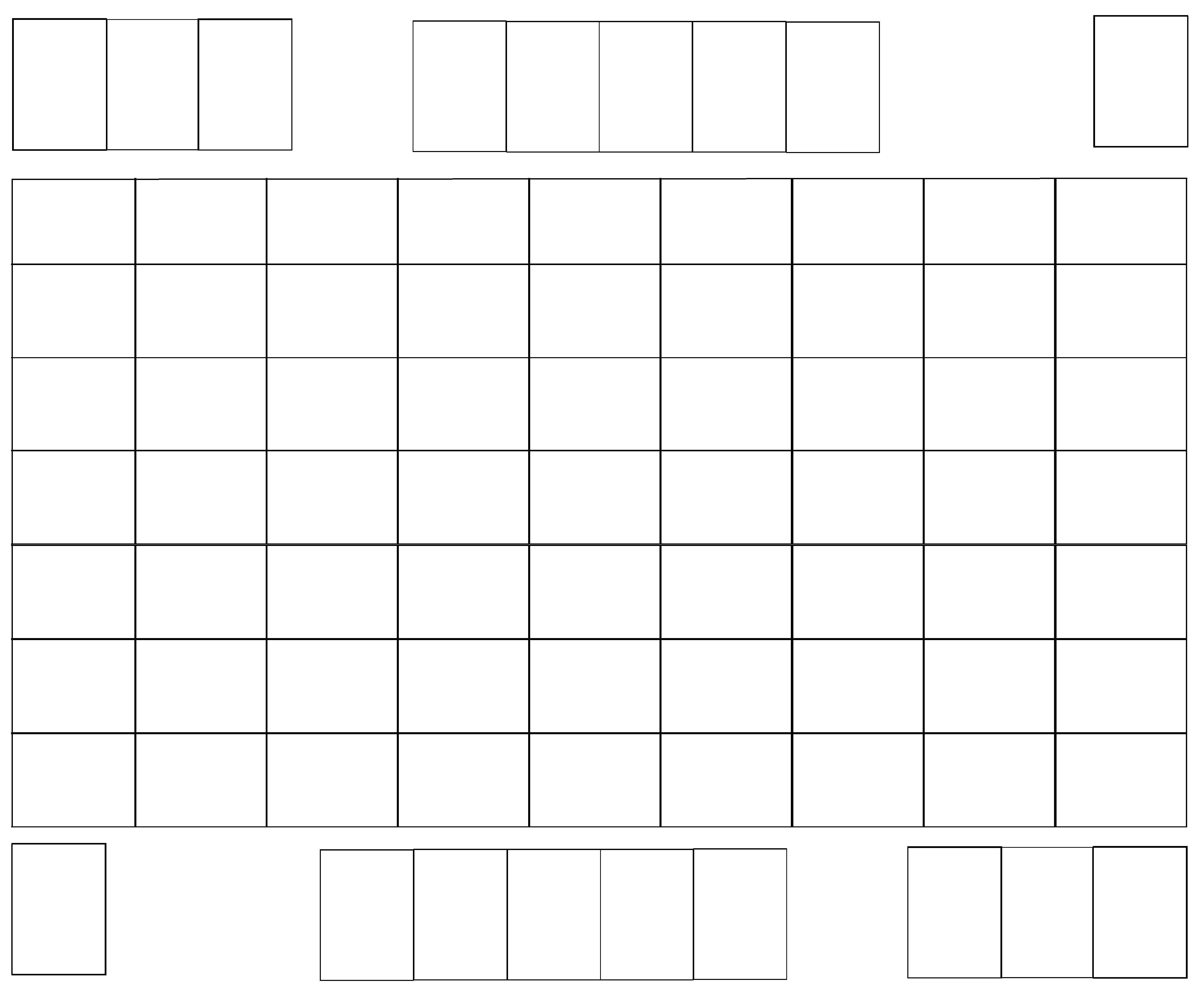
This right here is the gameboard. Looks sort of like a chess board, doesn't it? Indeed it does because positioning is a very key aspect of the game. This doesn't play like any regular card game where you just play your units onto the board and then attack with them. Instead, this game plays very much like if chess was its own card game.
If you've ever heard of Duelyst before, then this may look familiar. There is indeed a bit of Duelyst influence in the game board. If you're unfamiliar with what Duelyst is, it was a card game that just like this one, runs on a playing field akin to a chess board and the positioning of all of your game pieces was an extremely integral part of the game.
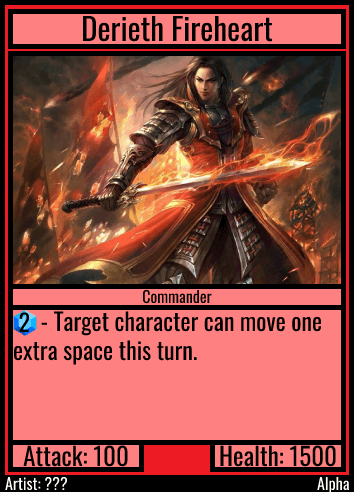
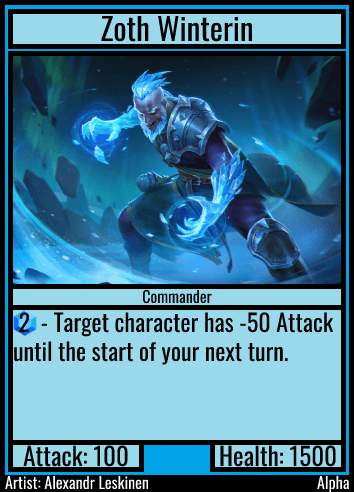
The game board isn't the only piece of Duelyst influence that exists though. These are your Commander cards that each player starts the game with on the center. They act as both your life points and a means of what you can use to fight your opponent. Commanders by default start with 100 Attack and 1500 Health, and if your Commander reaches 0 Health, you lose the game. They each have a Commander Ability which can be used once per turn and costs 2 mana to gain a small benefit, just like Hero Powers in Hearthstone. There are a total of 6 Commanders, one for each color of card in the game, but perhaps more could've been added in future sets with different abilities or ever different stats.
Fun fact: Derieth is named after my very first character in Skyrim.
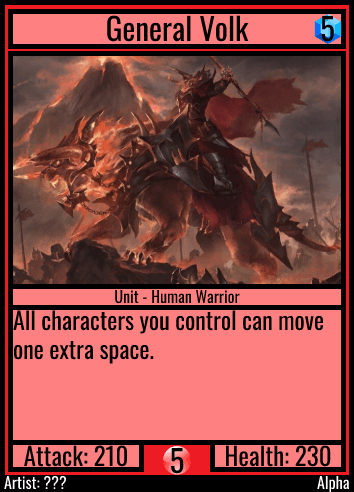
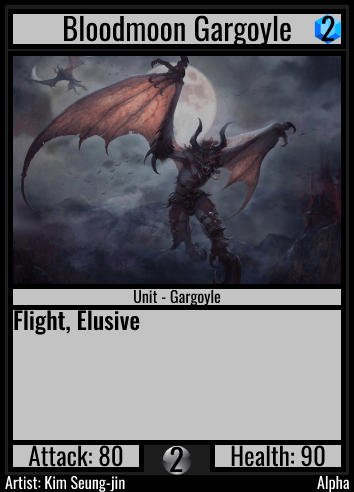
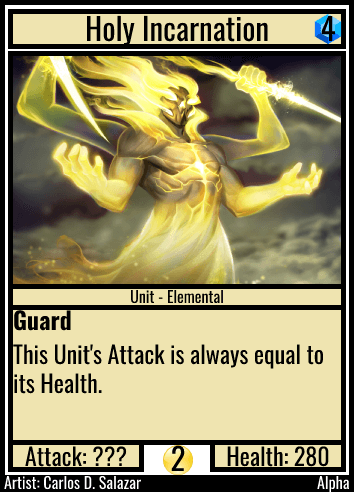
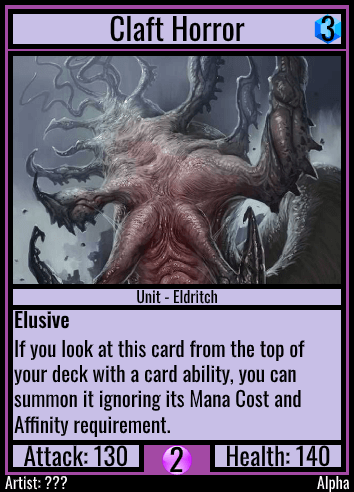
But of course, you need some reinforcements to fight for you. Some minions, monsters, creatures, or whatever terminology you use. Trying to come up different terms that all refer to the same exact thing seems to be a thing that card game makers like to do for some reason. In this game, they're called Units. Here are a couple of them. To play cards, you have a mana cost in the top-right just like many other card games. The mana system is the same that you're all familiar with of starting at 1 and gaining 1 every turn you reach 10 and you refresh what mana you used. This system is copied from Hearthstone by a lot of card games because it's honestly just an incredibly good system. Once you have 5 mana, you can play a card like General Volk which will make it so that everything you control can move one extra space on the board. Units all have Attack, Health, a mana cost, an effect textbox, and a Unit type. This is all par for the course on any card game, but what is that number on the bottom-middle? That is the Affinity requirement to play the card.
Affinity is gained exactly like mana. You gain 1 of them every turn until you reach a certain amount. Affinity however isn't a resource that you spend, but is instead something that is always passively working. Affinity is important because different colors have their own different type of it. You can play a mono-color deck and your Affinity won't be something to worry about, or you can play a deck of 2 colors which increases your deckbuilding options and drastically opens up a ton of possible strategies, but at the cost of giving you an extra resource to juggle, and if you don't juggle it will, then you'll be stuck not being able to play several of your cards. Affinity is mostly determined by both the size of the card as well as what characteristics are on the card. General Volk has a requirement of 5 Red Affinity to play him, and this requirement is this high because moving extra spaces is a very distinctly Red characteristic. An effect more generalized and available to other colors will have a lower Affinity requirement than a different card of the same mana cost.
Units by default, must be played on an empty adjacent tile to either your Commander or another Unit that you control. By default, they can move 2 tiles per turn.
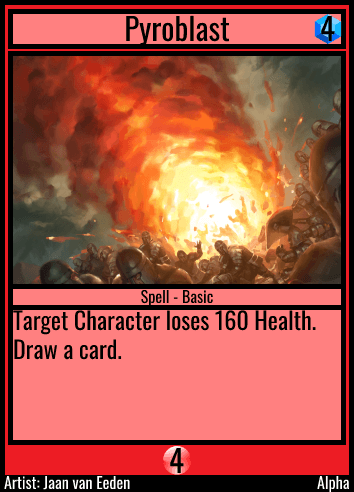
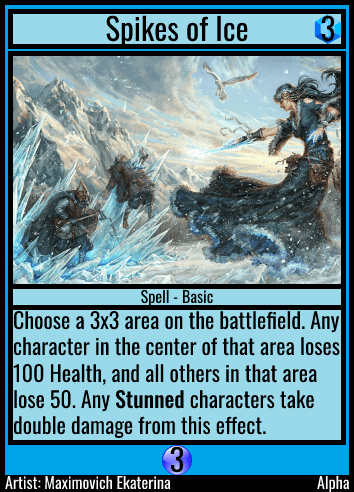
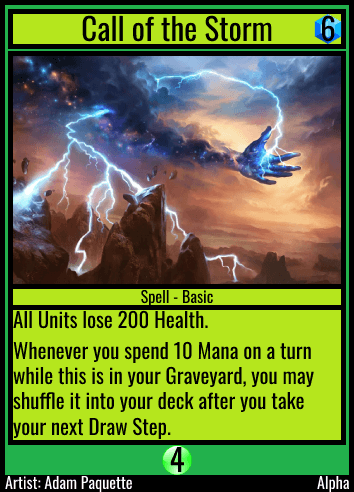
Of course, there are also some spell cards. Pyroblast is a pretty par for the course damage spell, but then you see a card like Spikes of Ice and you see exactly what this chess board structure can do to change the gameplay and how important positioning becomes.
There are 4 different spell types. Basic (as seen here) which just function as regular spells and go to your Graveyard after you cast them. Attachment spells which "attach" to a character and give it a special effect while attached. Permanent spells sit in one of your Permanent Spell Zones and the effect is continuously active while the spell sits there. Finally, there are Trick spells which function as Basic spells but you can played on your opponent's turn after your opponent performs an action. Pay attention to the amount of mana your opponent has at the end of their turn.
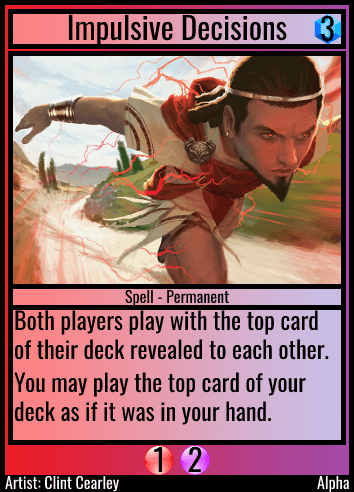
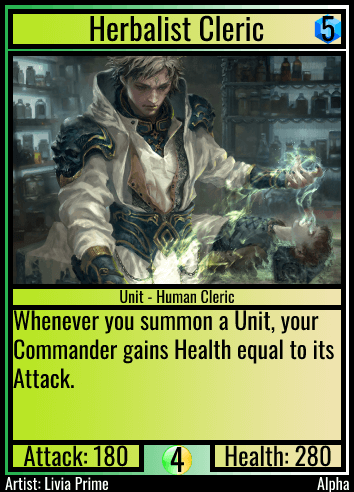
You also have a handful of multi-color cards. As expected, both colors can play these cards, but the way they go about doing it varies from card to card. Some of them like Herbalist Cleric may simply only ask you to play a Green or White deck as the Affinity requirement is 4 of either Green or White. Other cards like Impulsive Decisions though will require an amount of both Affinity types where you'll need a deck that is specifically both Red and Purple.
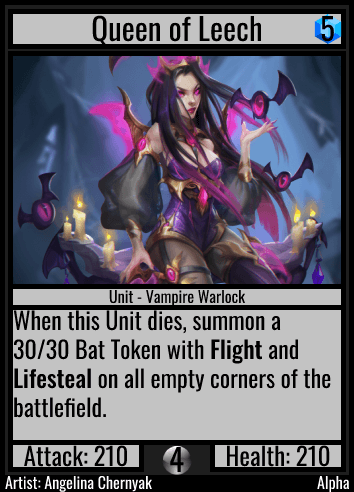
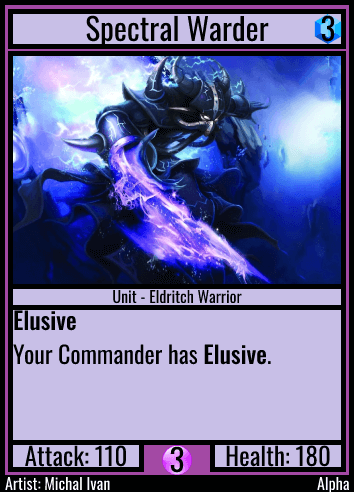
Now let's get into some combat. When one of your Units or your Commander is directly adjacent to either one of your opponent's Units or their Commander is when you can initiate an attack. Combat in the game is fairly standard, comparing the Attack and Health of each other's Units together.
Take Queen of Leech and Spectral Warder together. Queen of Leech's Attack of 210 is higher than Spectral Warder's Health of 180 meaning that the Spectral Warder will die, but its efforts will not be vain as it will deal its damage to Queen of Leech as well. Spectral Warder's Attack of 110 is lower than Queen of Leech's Health of 210, meaning that Spectral Warder won't kill it, but it will weaken it. Queen of Leech's Health will now be left at 100 after the exchange.
Personal side-note: I showed this game to a lot of my friends, and for some reason, Queen of Leech was basically everyone's favorite card. Whether that's because of the artwork or the way it interacts with the game mechanics in an interesting way that you couldn't replicate in other card games, I'm not so sure.
For the most part, this is how combat will generally work but there are some exceptions where it won't quite work this way.
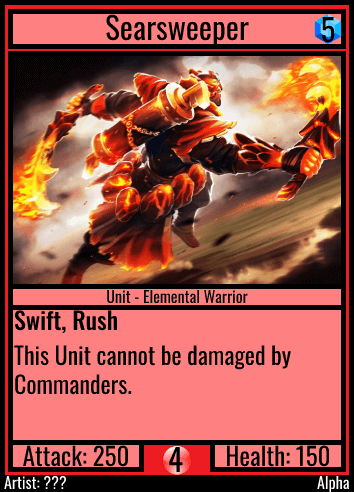
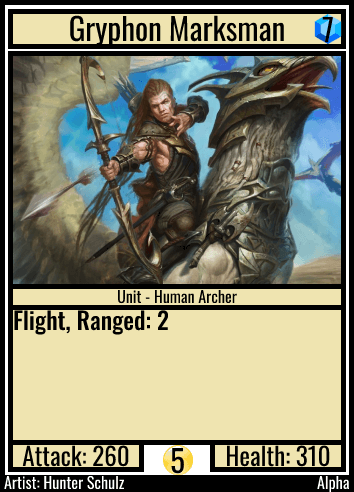
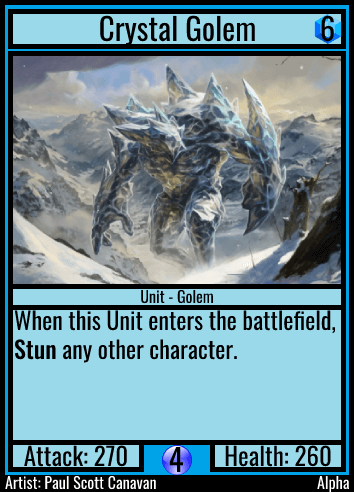
Searsweeper has Swift which functions exactly like Quick Attack from Legends of Runeterra. It won't take any retaliation damage if it kills what it attacks when it initiates an attack, but this only functions on your turn when you initiate the attack. As an added bonus, it also can't take damage from Commanders which can make it a good choice for Aggro. Out of all the colors, Red definitely excels the best at being aggressive.
Gryphon Marksman has Flight and Ranged: 2. Flight means that it can only be attacked either by other Units with Flying, or being Units with Ranged, but any card effect can still target is as normal. Ranged means that the Unit can attack something from X tiles away on the battlefield, and what you attack won't deal any retaliation damage unless it also has Ranged. Ranged is a predominantly White characteristic, although it can once in a while be featured on other colors as well. A main weakness of White is its inability to use direct removal effects to deal with threats and relying heavily on combat to win, thus where Ranged fits in as a predominantly White mechanic.
Crystal Golem has an ability to Stun any character (meaning either Unit or Commander) when it enters the battlefield. Characters that are Stunned cannot move or attack until they spend a full turn under their owner's control in the Stunned state. Additionally, Stunned characters will not deal any retaliation damage in combat.
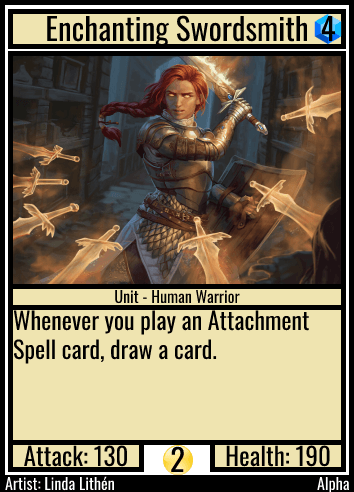
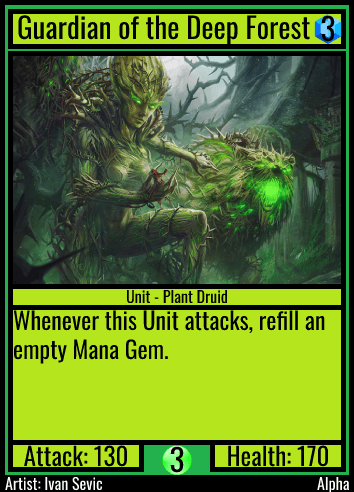
Since everything functions on a game board, movement is of course very integral. As mentioned before, Units can only be played adjacent to your Commander or other Units. In the case of this game board, the green spaces indicate where you would be able to play a Unit.
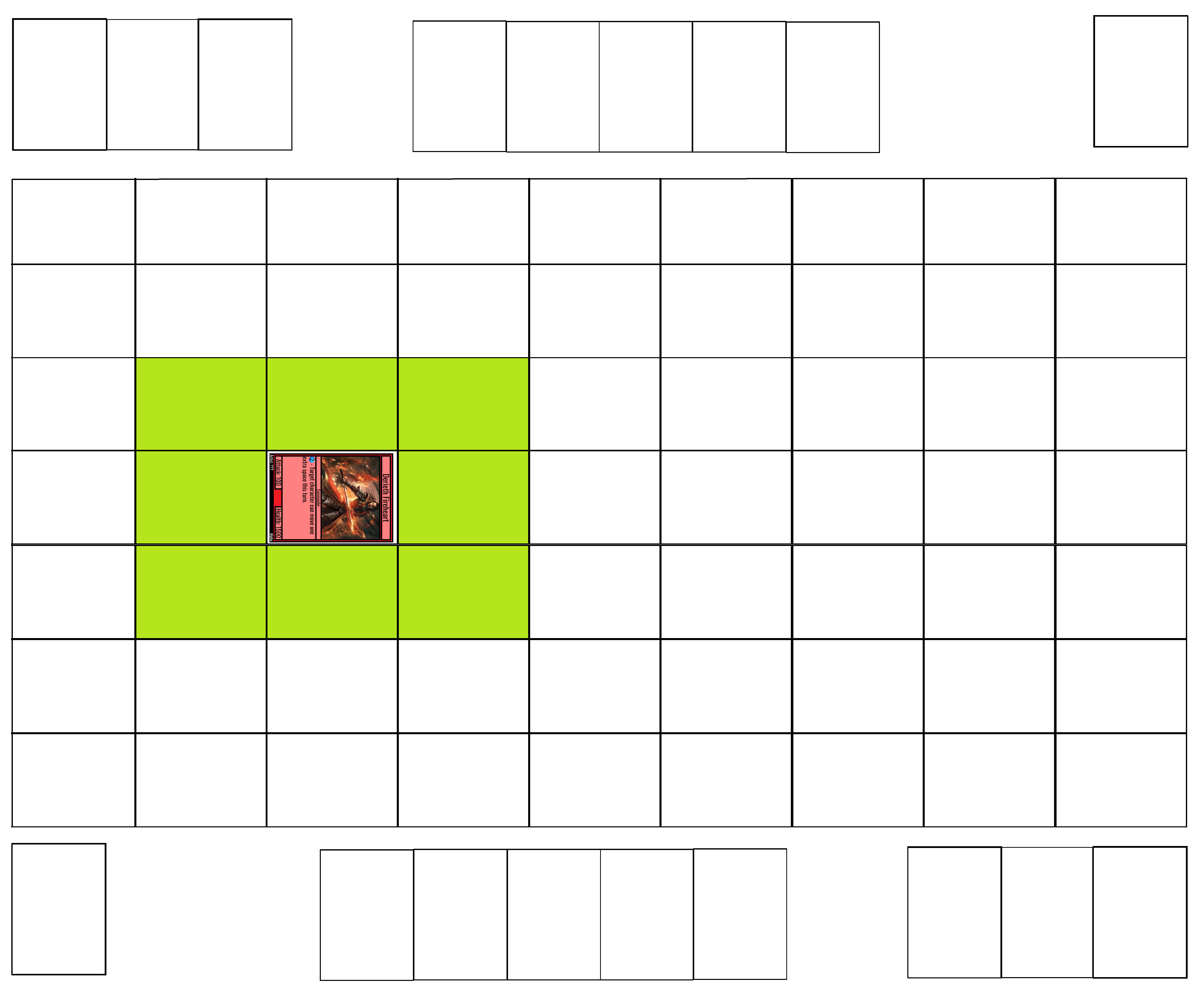
This additionally affects movement and combat. Characters by default can take one movement action to move 1 or 2 tiles, and therefore your Unit in question could move to any of the blue spaces.
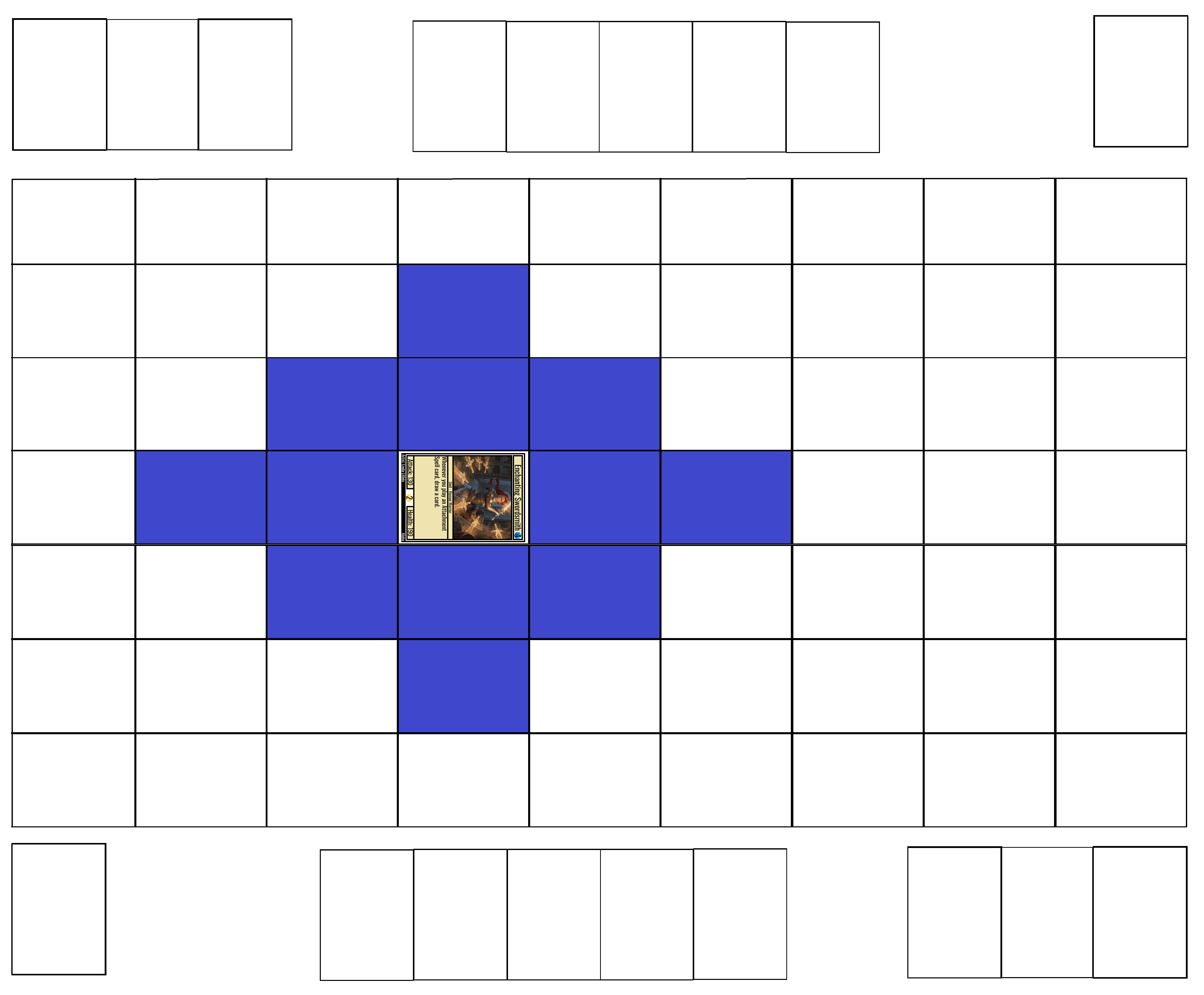
Finally, this also affects combat. Characters are only able to attack what's adjacent to them, therefore your Unit in question could attack any enemy game piece in any of the red spaces. For Units with Ranged, this obviously extends further.
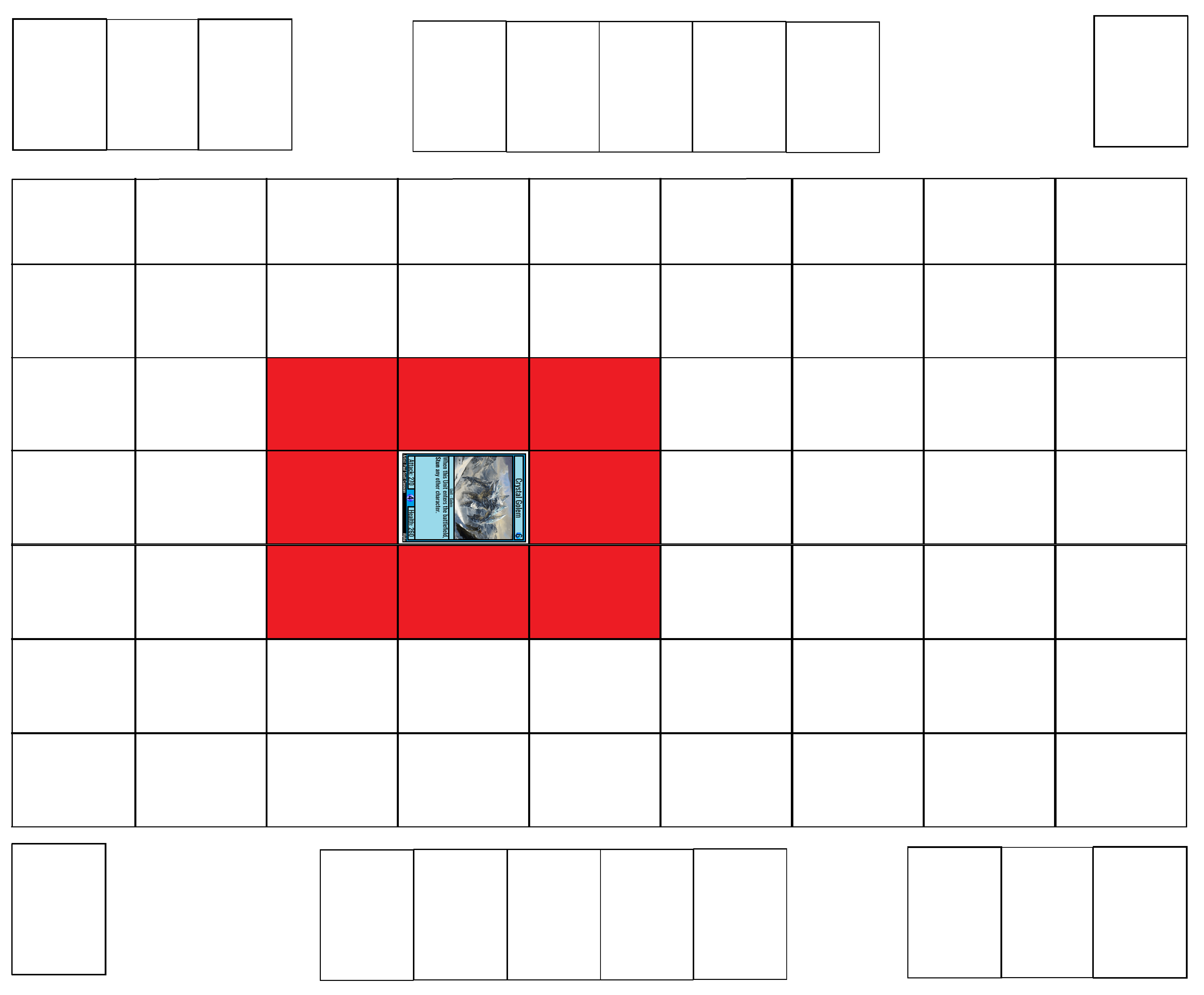
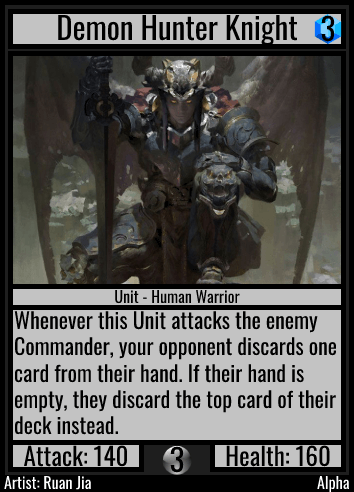
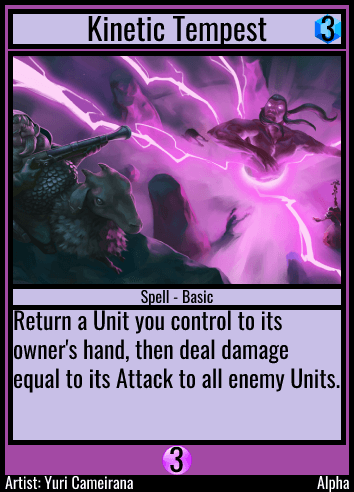
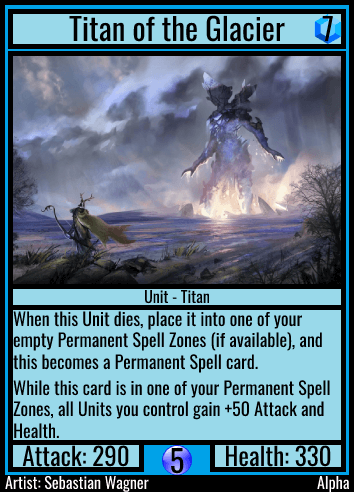
The inner workings of the game were never fully completed, but my first iteration of how deckbuilding rules would apply is that you would have a deck of 40-50 cards with a maximum of 3 copies of a certain card in your deck. You'd have a maximum of up to 2 colors of cards allowed in your deck, although in retrospect, I suppose there may not be much harm in allowing more than that since you'd be gimping your ability to play a lot of cards pretty heavily due to the Affinity system. Players would start the game with a hand of 5 cards with an opportunity to mulligan one time like Hearthstone.
While the game may (or may not, because I honestly wouldn't be able to tell you) look refined for a first draft without playtesting, there are definitely quite a few aspects I haven't considered. What you may have noticed on these cards is that there's no rarity symbol anywhere. This comes out of both not knowing where to put it, and having nothing I could use to represent it that didn't look stupid. One other problem that I thought of too late was adaptability for colorblind players, which is especially a problem for Red and Green cards. In Magic: The Gathering, Red and Green cards feature different border textures as well as the iconic flame and tree icons to help accommodate for this. Similarly, different Hearthstone classes feature different textures on their minion, weapon, and hero card frames (although admittedly, their spell frames do not have exactly the same luxury). My game unfortunately didn't contain any type of non-color indicators like this, so if they look at cards like Skyscorcher Dragon and Foliage Construct side-by-side, they might be a bit lost as to which card is supposed to be Red and which one is supposed to be Green other some more intricate details such as what mechanics and minion types the colors tend to specialize in more often than other colors.
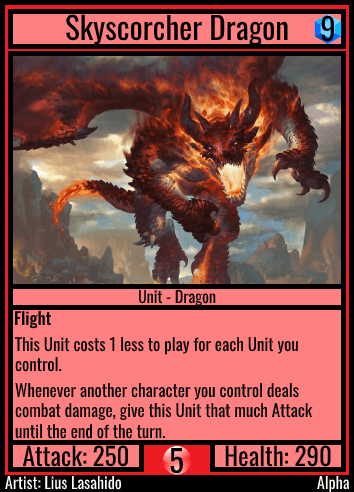
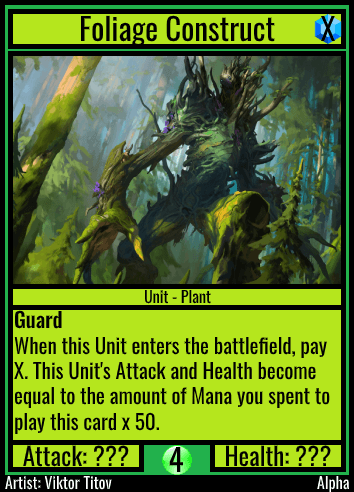
A few other things not worked out was first turn advantage. Different card games accomplish this in different ways. Hearthstone has probably the most fun system, giving the second turn player an extra card and a Coin. Magic: The Gathering skips the draw step of the first turn. Because I hadn't actually gotten to any playtesting phase yet, the game could of course have a bunch of other major problems that I haven't yet spotted. I guess you could consider me somewhat of a perfectionist when it comes to my own personal projects, and perfection is something that is completely impossible in a card game. Due to its damage system, there's also a LOT that the player would need to keep track of if you attempted to play this game on paper, to the point where you may need a separate piece of paper just to keep track of what stats a character has. Perhaps the way the game is structured just simply isn't as fun as it might sound in theory.
While this also sounds quite obvious to me, it is still worth pointing out that of course the artwork I use wouldn't actually be used in the game. If this were to be a game that I actually developed, the art would be an entirely different beast than it is to use in a simple prototype. I wasn't able to credit every artist, because I sometimes just couldn't find them. I always tried wherever I could, but there were times where they just couldn't be find. I did attempt to keep these cards to a minimum for the sake of the article, but it sometimes was just necessary.
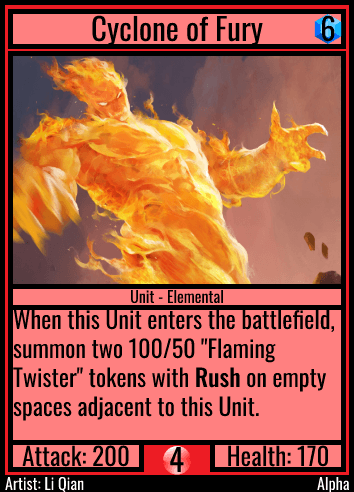
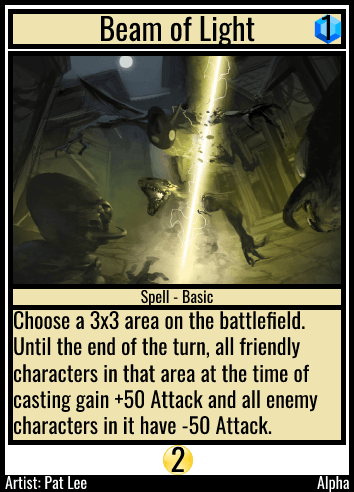
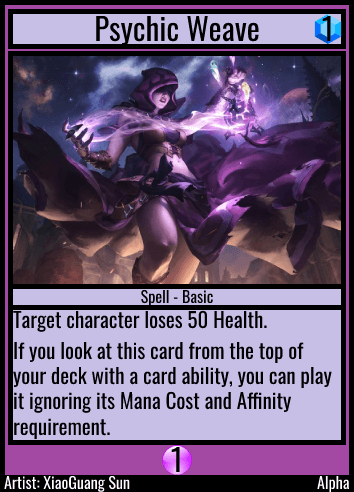
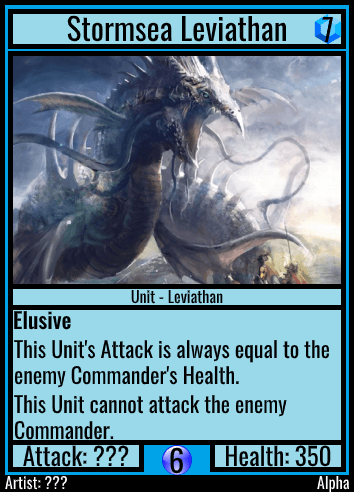
There's probably a lot more I could talk about that isn't quite immediately obvious to me right away. If you have some questions about the game, then I'd be more than happy to answer them. While this project will most likely sit as an unfinished idea on my computer until the end of time, I'm more than ecstatic to have shown it all off to you guys. I had a lot of fun making these cards, and I hope you had just as much fun reading them.
It's also just been a lot of fun to write Fan Community Spotlight for the site, and it's exciting to me to finally reach 100, but this train has no brakes, and there's going to be a lot more of them to come!
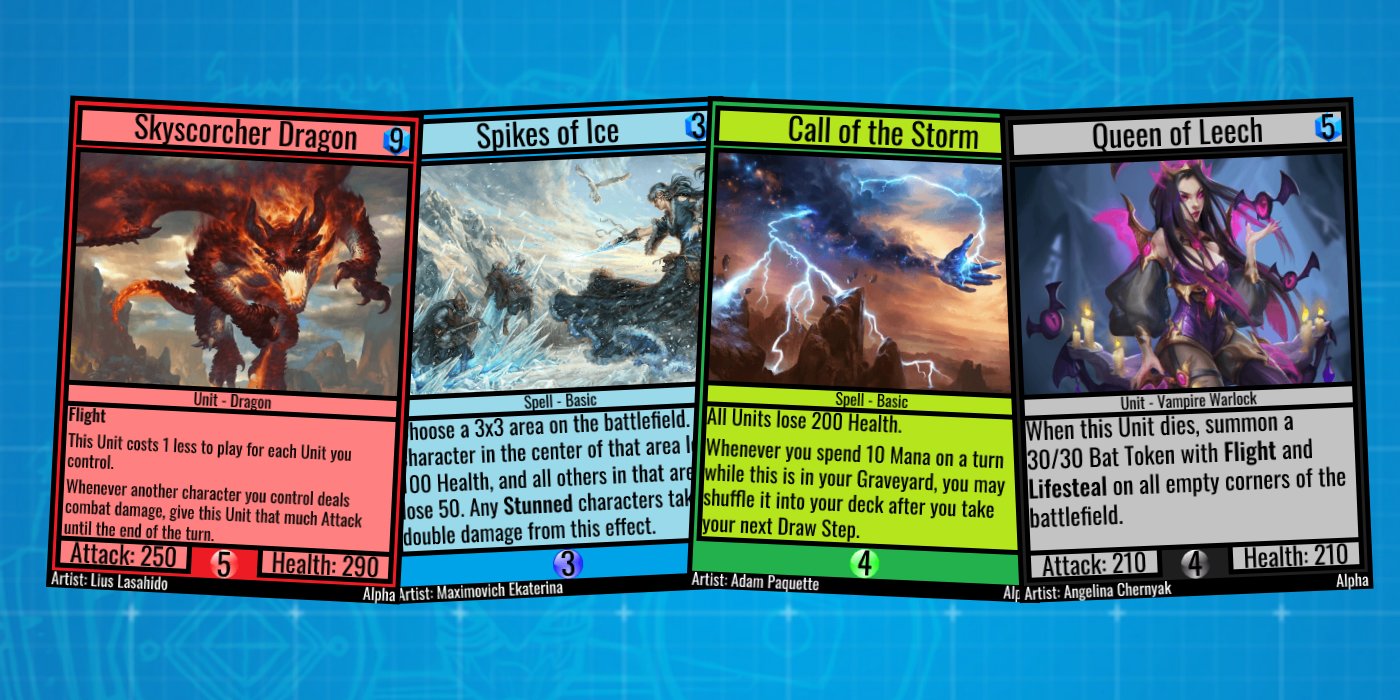
Comments
Thank you for sharing this personal project with us, Demon. I really liked how well the board meshes with the cards, really adds a whole new dimension to gameplay.
Congrats for the 100 FCS! Definally my favorite content on the site nowadays, and I hope to contribute to it more in the future.
If you've got more projects, then there's absolutely no doubt that you'll be featured more on this series. ;)
Congratulations on 100, Demon!
It's great to see something start out no more than the simple idea of shining the spotlight on great content the Hearthstone community is creating, evolving into a series that has crossed into other titles and even debuting your own homegrown game. It's also great because not too many series on the site make it even close to 100, the only other "series" that has definitely done that is our usual Weekend Wild Decks from Frosty.
Cheers to the achievement and another 100!
Lovely to see this being developed in some way, shape and form! Love me more Duelyst-esque CCGs like I did for FCS.